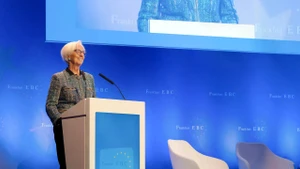EU climate ministers have reached an agreement on the bloc’s 2040 climate target amid mounting pressure to swiftly approve a new commitment ahead of the 30th Conference of the Parties to the UN Framework Convention on Climate Change (COP30), which will take place in Brazil next week. The agreement is seen as a significant step forward, ensuring that the 27-member bloc does not enter COP30 empty-handed.
The EU’s new climate target is to reduce greenhouse gas emissions by 90% by 2040 compared with 1990 levels, though it includes a series of flexibility measures that effectively lower the real level of ambition. Member states will be allowed to purchase international carbon credits to offset as much as 5% of the 90% reduction target, meaning that the actual domestic emissions cut within the bloc would be around 85%.
The EU has also left open the possibility of allowing an additional 5% in international credits in future to help meet the 2040 climate goal, which would further reduce the bloc’s actual reduction level to approximately 80%.
As a result, EU member states have accepted several notable concessions, including postponing by one year, to 2028 for the launch of a new carbon market covering road transport and industrial heating; as well as permitting a full review of the 2040 target every two years.
Throughout the negotiations, Denmark, which currently holds the rotating EU presidency, had to work to reconcile the differing positions between countries pushing for more ambitious targets and a more sceptical group led by Italy, Poland, Hungary, and the Czech Republic. These countries fear that tighter climate policies will affect industrial competitiveness and raise energy prices.
Significant differences remain among EU members, with Italy, Poland, and the Czech Republic arguing that the new reduction level is too stringent for domestic industries already burdened by high energy costs and fierce competition from cheaper imports. Western and Northern European countries — where renewable energy and electric vehicles are more advanced — support the target but still call for greater flexibility.
Having already reduced emissions by 37% compared with 1990 levels, the EU is stepping up efforts to meet upcoming climate milestones. In a context where the bloc is shifting towards new priorities such as defence and economic growth, setting a climate target is not merely a numerical choice but a political decision with far-reaching consequences across Europe.
Faced with political and economic pressures, as well as differences in interests, financial capacity, and transition pace among member states, the EU has been compelled to introduce flexible adjustments so as not to significantly affect its sustainable development goals.
Reaching an agreement on the new climate target strengthens the EU’s position at COP30, where the bloc has long been viewed as having the world’s most ambitious environmental policies. The 2040 climate target is considered a milestone in global climate action, affirming Europe’s commitment to being proactive and cooperative in the pursuit of a future that balances development with the protection of the planet. Nevertheless, the path toward a green European economy remains full of challenges.















